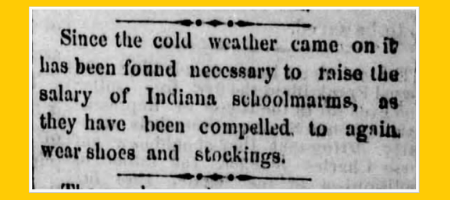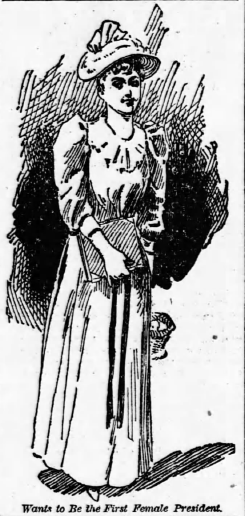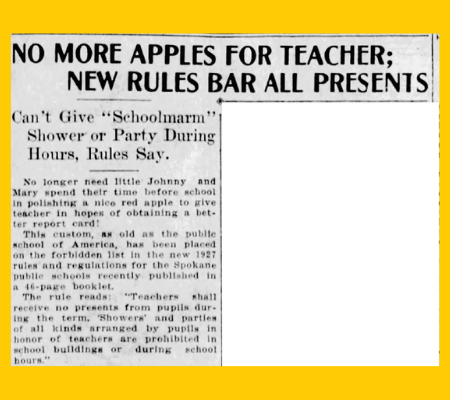The word “schoolmarm” captures the tensions and dilemmas of American education
Though I’m fairly sure I’d heard the word before, the first time the word schoolmarm fully registered with me came somewhere in Dana Goldstein’s fantastic book, The Teacher Wars: A History of America’s Most Embattled Profession. I followed one of her references to Frances Donovan’s 1938 book, The Schoolma’am and I was enamored. The word, the sentiment, the mixed messages … I realized I adored the word schoolma’am and its more common sister schoolmarm.
Depending on which resource you read, a schoomarm is a vibrant young, unmarried woman teacher (Evening Star, 1915; Gallipolis Journal, 1852) or an elderly, unattractive woman teacher who has lost her joie de vivre (The Daily Record, 1953.) A schoolmarm is gentle and kind. She is harsh and will beat her students to achieve her pedagogical goals. She is wise and a rich source of knowledge. She is naïve and knows nothing about the “real” world. She is terse. She is patient. She is someone to be pitied. She is someone to be admired.
In a word, “schoolmarm” captures the tensions and dilemmas of American education.
Although much of education has been shaped by men, mostly white, with access to power, the person most likely to be in front of the classroom is a woman, mostly white. In tracing back her roots, we bear witness to the history of these United States and our schools. We can see how white women too often chose race solidarity over gender solidarity and worked for privileges they would deny women of color. We see how non-disabled educators worked to keep disabled educators and children with disabilities out of their classrooms and how straight teachers discriminated against their LGBTQIA+ peers and students. There’s the history of white Southern educators shoring up the “Lost Cause” narrative and the way Northern educators supported racist narratives during and following Reconstruction. Schoolmarms weren’t a part of the NEA’s Committee of Ten but they organized a strike in 1968 against a mostly Black-led community school board in NYC.
Schoolmarms were leaders in the suffrage, early feminist, and labor movements. Teachers were, and are, instrumental in the long work towards equity and equality. They advocated for children with disabilities during the passage of the Americans with Disabilities Act and helped craft federal policies like the Individuals with Disabilities Education Act and state-level policy like New York State’s Dignity for All Students Act. Too many teachers have lost their lives through the simple act of showing up to work the day of a school shooting or during a pandemic. Too many have taken a second, or even third job, rather than leave for the private sector.
Schoolmarm, not unlike America, is a word and concept that contains multitudes. It sits in tension with its own history, which makes it perfect for these times and this type of work. Schoolmarm Advisors is focused on helping education authors and publishing houses tell a clearer, more complicated truth about – past and present – in order to create the conditions for a more equitable, better future for all of America’s children.
— Jennifer Borgioli Binis, President, Schoolmarm Advisors




